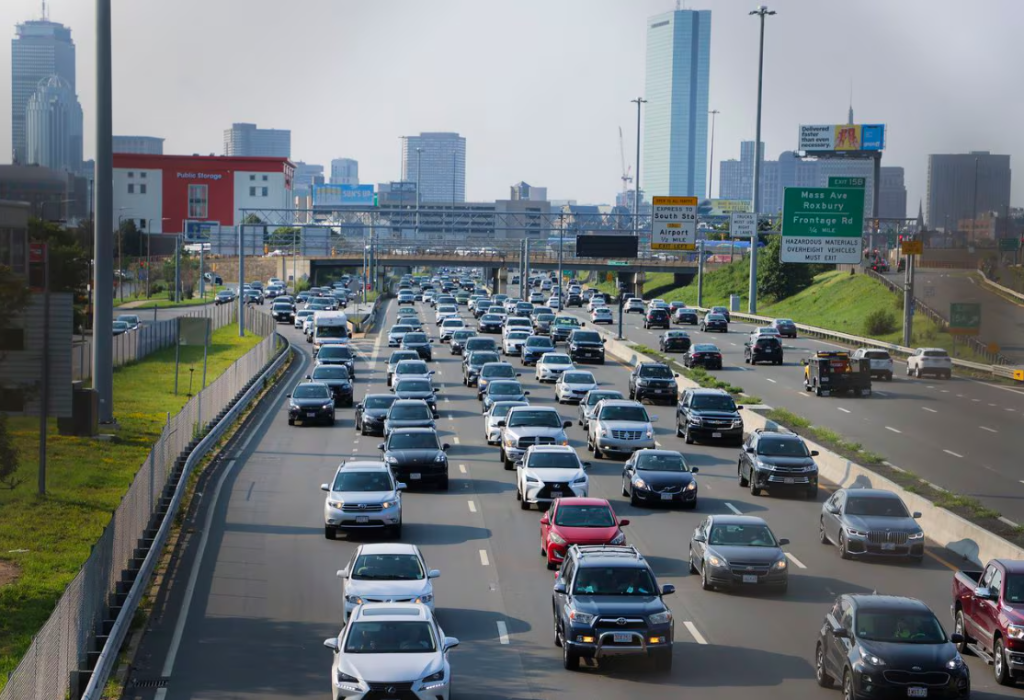【中美创新时报2024 年 4 月 19 日编译讯】(记者温友平编译)在整个大流行期间,政策制定者和劳工经济学家对越来越多的人逃离马萨诸塞州前往其他州以及他们的出走对未来可能意味着什么敲响了警钟。《波士顿环球报》记者Dana Gerber 和 Kirkland An Globe 对此作了下述报道。
现在,一份新报告揭示了这些逃亡者到底是谁。对于马萨诸塞州的长期经济竞争力来说,这可能不是一个好兆头。
波士顿基金会的研究机构波士顿指标发表了一份分析报告,探讨了马萨诸塞州所谓的国内移民趋势,即人们前往美国其他地方的趋势。纵观 2021 年和 2022 年的两年平均值,分析发现,搬出马萨诸塞州的人主要是受过大学教育的白人、中等收入和高收入者。
尤其可怕的是:工作年龄的成年人正在成群结队地离开。报告显示,2021 年和 2022 年,马萨诸塞州平均减少了 22,631 名 25 岁至 44 岁的人口,是所有年龄段中人数最多的,并且比前几年显着增加。从角度来看,这大约是温彻斯特的人口规模。
本月发布的《波士顿指标》报告的作者彼得·丘尔扎克 (Peter Ciurczak) 表示,这个年龄段的人“通常会随着年龄的增长而开始在劳动力市场中占据更多份额”。“但如果我们失去他们,他们就无法做到。”
研究人口趋势的马萨诸塞大学阿默斯特多纳休研究所经济和公共政策研究主任马克·梅尔尼克表示,对于一个人口迅速老龄化和出生率相对较低的州来说,这意味着麻烦。
可以肯定的是,这个问题并不是什么新鲜事。梅尔尼克说:“我们一直是国内移民的净输家。”他补充说,年轻人在历史上是一个短暂的群体。
并且有稳定的迹象:尽管马萨诸塞州在 2021 年和 2022 年出现了大幅净移民量,但该州在 2023 年恢复了盈利。从 2022 年 7 月 1 日到 7 月 1 日,马萨诸塞州经历了近 11,500 名居民的净净移民,2023 年,国际移民数量从大流行时代的低点反弹。
事实上,根据先锋(Pioneer)研究所智库周四发布的一份报告,马萨诸塞州在 2020 年至 2023 年间接收的移民占总人口的比例比任何其他州都多。Pioneer 表示,2023 年,约有 51,000 名净移民移居马萨诸塞州,而约有 39,000 名净国内居民离开该州“寻找更美好的牧场”。
尽管国内人口流失并不是什么新鲜事,但随着该州“银色海啸”的逼近,解决劳动力市场问题变得越来越紧迫:到 2030 年,马萨诸塞州约 21% 的居民将达到 65 岁或以上,这一比例略高于不到 10 岁。根据多纳休研究所 (Donahue Institute) 的预测,2010 年这一数字为 14%。
梅尔尼克说:“虽然新冠疫情让世界停顿了两年,我们几乎冻结了一切,但不断发生的一件事是我们不断变老。”
那么问题就变成了:为什么这么多工作年龄的人离开,我们如何止住损失?
“总是很难确定任何一个原因,”丘尔扎克说,“但可以肯定的是,住房似乎是一个重要原因。”
马萨诸塞州的住房成本,特别是波士顿地区,是全国最高的。这是年轻人最关心的问题; 大波士顿商会基金会最近的一项调查发现,在大波士顿地区 20 至 30 岁的年轻人中,房租成本和购房能力是决定留下或居住的最重要因素之一。
随着疫情开启了一个可以在任何地方工作的世界——尤其是对于受过大学教育的知识工作者来说——那些有能力搬家的人决定,他们会在其他地方得到更划算的工作。
“老实说,甚至只是任何一声巨响,”丘尔扎克说。
虽然这些问题都有详细记录,但可能的解决方案却比较模糊。梅尔尼克说,更多的住房生产是这个难题的关键部分,但马萨诸塞州需要采取“全面的方法”来促进劳动力发展,例如对该州的门户城市以及劳动力参与率较低的群体进行有针对性的投资,例如残疾人、退伍军人和有犯罪记录的人。
“实际上,新的婴儿潮不会解决这个问题,”他说。“因此,为了找到角落里的员工,你需要吸引和留住他们,优化员工,并提供让工作变得更轻松的创造性解决方案。”
题图:随着住房成本不断上升,具有新的灵活性的工作年龄成年人正在成群结队地离开马萨诸塞州。MATTHEW J. LEE/GLOBE STAFF
附原英文报道:
People are leaving Massachusetts in droves. Who are they?
By Dana Gerber and Kirkland An Globe Staff,Updated April 18, 2024
Throughout the pandemic, policy makers and labor economists sounded the alarm over the increasing number of people fleeing Massachusetts for other states — and what their exodus could mean for the future.
Now, a new report has shed some light on who, exactly, these runaways are. And it probably does not bode well for the state’s long-term economic competitiveness.
Boston Indicators, the research arm of the Boston Foundation, published an analysis exploring trends in so-called domestic outmigration in Massachusetts, or people leaving for elsewhere in the United States. Looking at a two-year average across 2021 and 2022, the analysis found that the people moving out of Massachusetts were predominantly white, middle- and high-income earners, and college-educated.
Particularly dire: Working-age adults are leaving in droves. On net, Massachusetts lost an average of 22,631 people ages 25 to 44 across 2021 and 2022 — the largest number of any age group and a marked increase over previous years, according to the report. For perspective, that’s about the size of the population of Winchester.
That age group “would normally start making up more of the labor market as they grow older,” said Peter Ciurczak, the author of the Boston Indicators report released this month. “But if we lose them, they’re not going to be able to.”
For a state with a rapidly aging population and a relatively low birth rate, this spells trouble, said Mark Melnik, the director of economic and public policy research at the University of Massachusetts Amherst Donahue Institute, which studies population trends.
To be sure, this problem is nothing new. “We’ve always been net losers on domestic outmigration,” Melnik said, adding that young people are a historically transient group.
And there are signs of stabilization: Though Massachusetts saw dramatic levels of net outmigration in 2021 and 2022, the state got back in the black in 2023. Massachusetts experienced a positive net migration of nearly 11,500 residents from July 1, 2022, to July 1, 2023, as international immigration numbers rebounded from pandemic-era lows.
In fact, Massachusetts received more immigrants between 2020 and 2023 than any other state as a percentage of overall population, according to a report released Thursday by the Pioneer Institute think tank. In 2023 about 51,000 net immigrants moved to Massachusetts, compared to the approximately 39,000 net domestic residents who departed the state “for greener pastures,” Pioneer said.
Even though domestic departures are nothing new, solving them is becoming more and more urgent for the labor market, as the state’s ”silver tsunami,” looms: By 2030, about 21 percent of Massachusetts residents will be 65 or older, up from just under 14 percent in 2010, according to projections by the Donahue Institute.
“While COVID stopped the world for two years, and we kind of just froze everything, the one thing that kept happening was we kept getting older,” Melnik said.
The question then becomes: Why are so many working-age people leaving, and how do we stanch the losses?
“It’s always hard to pin any one reason down,” Ciurczak said, “but certainly, housing seems to be a big one.”
Housing costs in Massachusetts, particularly in the Boston region, are among the highest in the country. This is a top-of-mind concern for young people; a recent survey by the Greater Boston Chamber of Commerce Foundation found that among 20-to-30-year-olds in Greater Boston, the cost of rent and the ability to buy a home ranked among the most important factors in determining whether to stay or go.
And as the pandemic ushered in a work-from-anywhere world — particularly for college-educated knowledge workers — those with the means to move decided they would get more bang for their buck elsewhere.
“Or even just any bang, honestly,” Ciurczak said.
While the problems are well documented, what’s hazier are possible solutions. More housing production is a crucial piece of the puzzle, Melnik said, but Massachusetts needs an “all-in approach” to workforce development, such as targeted investments in the state’s Gateway Cities as well as groups that have lower labor force participation rates, such as people with disabilities, veterans, and people with criminal records.
“Realistically, there’s not going to be a new baby boom that’s going to solve this,” he said. “So in order to find the workers in the corners that you need to find them, it’s attraction and retention, it’s optimization of workers, and it’s creative solutions to make working easier.”

